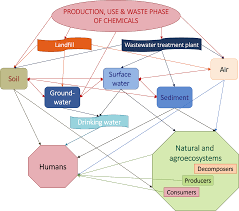A Small Dose of Toxicology
By Steven G. Gilbert
Everyday, we come into contact with many relatively harmless substances that could, at certain concentrations, be toxic. This applies not only to obvious candidates such as asbestos, lead, and gasoline, but also to compounds such as caffeine and headache tablets. While the field of toxicology has numerous texts devoted to aspects of biology, chemistry, and mechanism of action, the need remains for a book that places toxicology within the framework of our daily lives.
A Small Dose of Toxicology presents the principles of toxicology by exploring the effects of common chemical agents such as caffeine, nicotine, and alcohol. It reviews the fundamentals of dose-response and factors of individual sensitivity in regard to these drugs, and then applies this knowledge to environmental contaminates such as lead, arsenic, pesticides, mercury, and radiation. Chapters discuss neurotoxicology, risk assessment, carcinogenicity, and with a variety of specific toxic agents, with each chapter designed as a self-contained module to allow for flexibility in the selection of personal or academic material.
Exploring current toxicology concerns within a human context, this text discusses how toxicology affects our everyday lives while providing insight into the broader issues of public health and disease prevention. Environmental and public health professionals, as well as novices and students requiring a basic foundation in toxicology will find this resource incredibly useful.
Animal Models in Toxicology
Edited By Shayne C. Gad, Shayne C. Gad
Animal Models in Toxicology is a single-source reference for the use of animal models in toxicology. Chapters cover nine species used in toxicology and experimental biology. With contributions from experts in toxicology, toxicological pathology, and species-specific metabolism, each of these chapters provides an excellent introductory “course” along with guidance to the literature for a more detailed understanding.
This edition includes five new chapters. The first of these provides specific and detailed guidance on the humane, efficient, and effective performance of necropsies for laboratory animals. Other new chapters discuss new technologies available for laboratory animal research—imaging technologies, use of telemetry in animal studies, transgenic animal models, and immunology endpoint for assessment. Also provided is an overview of the increasingly complex laws and regulations that govern how laboratory animals are obtained, maintained, and utilized. A helpful appendix provides a quick guide to commercial sources of laboratory animals.
Advances in Entomotoxicology
Carlo P. Campobasso, Valentina Bugelli, Anna Carfora, Renata Borriello, Martin Villet
Forensic entomotoxicology deals mainly with the analysis of the tissues of insects to identify toxicants present in their food sources. Insects feeding on human tissues can ingest all of the xenobiotic substances taken by living individuals, such as common prescription and illicit drugs. Ecotoxicology is a well-established scientific discipline from which environmental forensic entomotoxicology is derived as a relatively new branch. Entomotoxicology also addresses the effects of drugs and toxins on arthropod development, survival, morphology, and their implications for estimating postmortem intervals. The primary focus of a forensic toxicologist is the detection of toxicants from human tissue samples to help in determining the cause of death. Like nutrients, toxicants encountered by an insect may be assimilated, digested, absorbed, and either sequestered, metabolized, or excreted. Entomological samples are currently of limited quantitative value in forensic toxicology.
Kratom exposures reported to United States poison control centers: 2011–2017
Published in Clinical Toxicology
Sara Post, Henry A. Spiller, Thitphalak Chounthirath, Gary A. Smith
From 2011 through 2017, 1807 kratom exposures were reported to United States PCCs. Almost two-thirds (65.0%) of these exposures occurred during 2016–2017. Most exposures occurred among adults ≥20 years (88.9%), males (70.8%), at a residence (86.1%), and were intentional (74.3%). Among first-ranked kratom exposures, 31.8% resulted in admission to a health care facility (HCF) and 51.9% in a serious medical outcome. Multiple-substance exposures were associated with greater odds of admission to a HCF (OR: 2.80; 95% CI: 2.21–3.55) and a serious medical outcome (OR: 2.25; 95% CI: 1.77–2.85) compared with single-substance exposures. There were 11 deaths associated with kratom exposure, including two that occurred after exposure to kratom only. Among kratom-only exposures, 86.1% resulted in one or more clinical effects. The most common clinical effects were agitation/irritability (22.9%) and tachycardia (21.4%). There were seven neonatal exposures, including five experiencing withdrawal.
Principles of Genetic Toxicology
Published in Drug and Chemical Toxicology
The toxicology of chrysotile-containing brake debris: implications for mesothelioma
Published in Critical Reviews in Toxicology
 Africa
Africa  China
China  Japan
Japan 

